The Bank of Canada raised its benchmark interest rate by half a percentage point, the first oversized rate hike in decades and an aggressive step forward in its campaign to tackle runaway inflation.
The bank’s governing council agreed Wednesday to increase the policy rate to 1 per cent from 0.5 per cent, and said that more rate hikes will be needed to prevent inflation expectations from spiraling upwards. It typically moves in quarter-point increments and has not announced a half-point hike since May 2000.
The bank also said that it would begin shrinking its enormous holdings of government bonds, amassed during the pandemic. This process, known as quantitative tightening, is effectively the reverse of the bank’s quantitative easing program and is expected to put additional upward pressure on interest rates.
These moves put the bank on track for the quickest monetary policy tightening cycle in decades, which could push borrowing costs for Canadian households and businesses above prepandemic levels by the end of the year.
“Canadians should expect interest rates to continue to rise toward more normal settings,” Governor Tiff Macklem said on Wednesday, suggesting that the policy rate likely needs to return to the neutral rate. The central bank estimates this to be somewhere between 2 and 3 per cent.
“If demand responds quickly to higher rates and inflationary pressures moderate, it may be appropriate to pause our tightening once we get closer to the neutral rate and take stock. On the other hand, we may need to take rates modestly above neutral for a period to bring demand and supply back into balance and inflation back to target,” Mr. Macklem said.
Wednesday’s announcement marks a shift in policy. After holding interest rates at record lows and taking a gradual approach to unwinding pandemic-era supports, Mr. Macklem and his team appear to have awoken to the dangers of inflation expectations becoming unmoored and have moved forcefully to defend their credibility.
Consumer price inflation has run above the central bank’s 1 per cent to 3 per cent target range for the past year, hitting a three-decade high of 5.7 per cent in February. Russia’s invasion of Ukraine has added to inflationary pressures, disrupting already fragile global supply chains and sending energy and food prices soaring.
The bank’s updated economic projections show consumer price index growth averaging 5.3 per cent this year, up from its 4.2 per cent projection in January. It does not see the inflation rate returning to its 2 per cent target until 2024.
Much of the upward revision to the inflation projection is the result of higher commodity prices. But there are also growing signs that inflation is being driven by domestic demand exceeding capacity. This is showing up in rising prices for some services, higher rents and rocketing homeowner replacement costs, which capture some of the rise in real estate prices.
“A broad set of measures suggests that economic slack has been absorbed and that the economy is starting to operate beyond its productive capacity,” the bank said in its quarterly Monetary Policy Report, published Wednesday.
Labour markets also are exceptionally tight, which is showing up in rising wages. Unemployment hit 5.3 per cent in March, the lowest in 50 years of comparable data. Meanwhile, businesses are reporting labour shortages and rising input costs, which they plan to pass on to customers.
The Bank of Canada typically looks past commodity price fluctuations when setting monetary policy. But with inflation already running hot, there are fears that the surge in energy prices could have an oversized impact on people’s inflation expectations.
Keeping expectations anchored is one of the bank’s principal concerns. Actual inflation depends to a significant extent on what people think it will be, as businesses and consumers, respectively, set prices and demand wages based on how fast they think prices are going up.
“We also need higher interest rates to keep Canadians’ expectations of inflation anchored on the target, so that as global inflationary pressures from higher oil prices and clogged supply chains abate, inflation in Canada falls bac toward the target,” Mr. Macklem said.
While inflation remains a major concern, the bank’s latest economic projection shows a strengthening Canadian economy. Gross domestic product is expected to grow by 4.2 per cent this year, and 3.2 per cent next year, led by strong exports and robust consumer spending.
The bank increased its projection for potential growth, thanks to rising immigration levels, growing business investment and the expected resolution of some of the supply chain problems associated with the pandemic.
The bank will rely mainly on rate hikes to increase borrowing costs and tamp down demand, although this will be complimented by quantitative tightening (QT). Since November, the bank had been in what it called the “reinvestment phase” where it was no longer expanding its balance sheet, but was still buying between $4 and $5-billion worth of government bonds a month to replace maturing assets.
Starting on April 25, the bank will stop buying Government of Canada bonds in both the primary and secondary market. The bank does not intend to sell the government bonds that it owns, but it will let them mature without replacing them. Around 40 per cent of these bonds mature within the next two years, which means the bank’s balance sheet could shrink relatively quickly.
If you have questions about what this means for you, reach out to me or any of our trusted mortgage brokers!
Rendell, M. (2022, April 14). Bank of Canada announces half-point interest rate increase, the first oversized hike in decades. The Globe and Mail. Retrieved April 14, 2022, from https://www.theglobeandmail.com/business/article-bank-of-canada-interest-rate-hike-announcement-april-2022/



